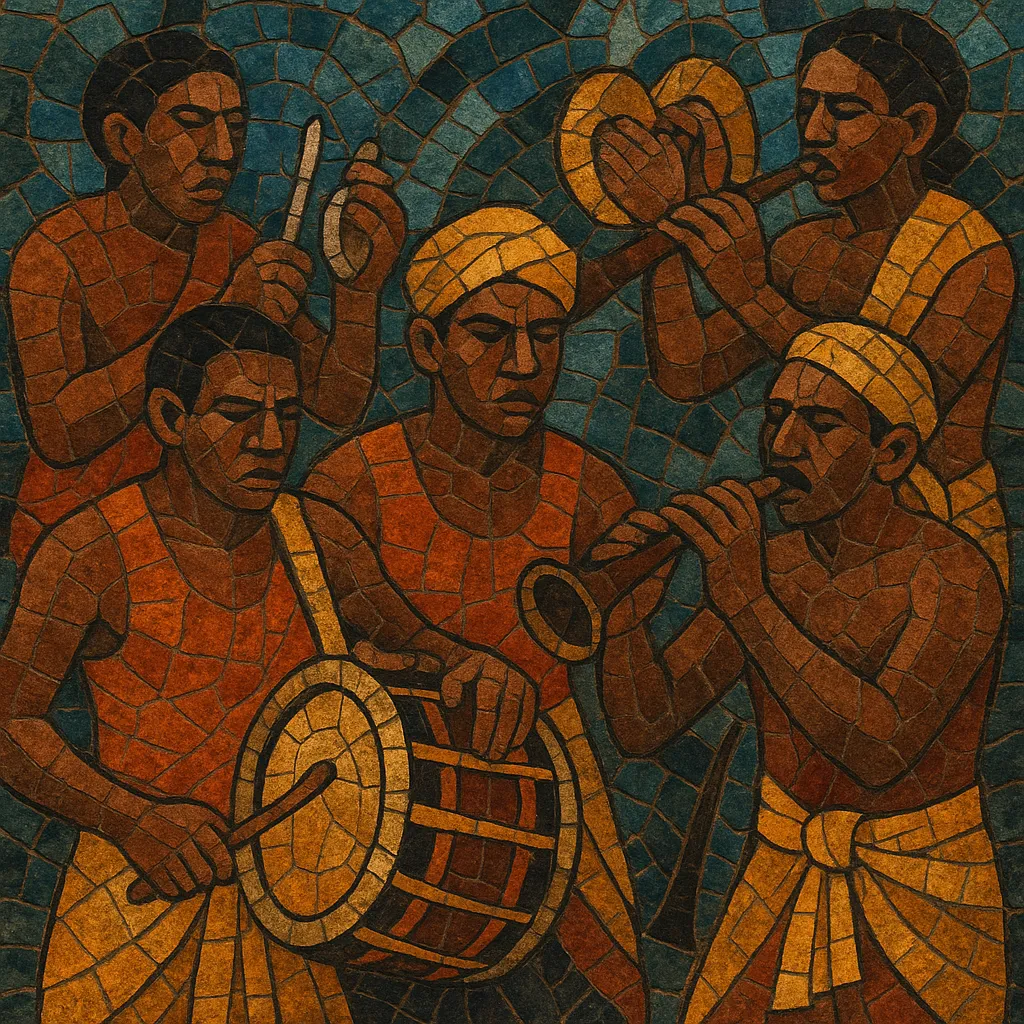Urumi melam is a high-energy South Indian Tamil folk devotional drumming ensemble centered on the urumi, a double-headed hourglass drum capable of piercing, whirring tones and pitch bends. The music is performed for Hindu temple rituals—especially Amman and Murugan/Kāvali (kavadi) processions—and for trance, vow-carrying, and festival contexts such as Thaipusam.
The ensemble typically features multiple urumi players interlocking with other folk percussion such as pambai, thavil, tappu/parai, hand cymbals (tālam), and often the nāgaswaram (double reed) for melodic cues. Tempi are fast (frequently 6/8 or driving 8-beat cycles), dynamics are intense and escalating, and rhythm is built through call-and-response patterns and rolling tirattu (turnaround) phrases designed to induce movement and trance.
Urumi melam emerged within Tamil folk-religious practice in south India (especially Tamil Nadu) where the urumi drum accompanies village deities’ festivals, processions, and vow-fulfillment rites. The urumi’s distinctive friction-driven, buzzing tone, its ability to bend pitch, and its penetrating volume made it a favored instrument for trance-inducing, protective, and apotropaic sonic roles around Amman (goddess) and guardian-deity cults.
The ensemble’s rhythmic language draws on Tamil folk drumming patterns and talas while intersecting with temple musical life that also includes nāgaswaram–tavil pairs and devotional song (bhajan). While rooted in folk practice rather than courtly/classical tradition, its performers often absorb tala literacy and konnakol-inspired rhythmic thinking from the broader Carnatic milieu.
From the late colonial era into the 20th century, Tamil migration carried urumi melam to Sri Lanka and Southeast Asia. In Malaysia and Singapore, the style became especially visible in crowded urban rituals—most famously Thaipusam—where urumi troupes support kavadi bearers, energize processions, and maintain collective tempo over long routes.
By the 1990s–2000s, amplified setups, portable PA systems, and staged temple-fair performances expanded the sound’s reach. Ensembles adapted flexible instrumentations, added whistles, conch shells, and occasionally keyboards or bass to reinforce grooves for outdoor crowds without losing the core urumi-led rhythmic drive.
Today, urumi melam remains primarily a participatory, community-anchored ritual music. At the same time, its grooves and timbres have influenced Tamil film dance tracks and stage shows, and inspired fusion projects that pair urumi patterns with electronic percussion, hip hop backbeats, or global “worldbeat” aesthetics. Despite modernization, the ensemble’s central function—supporting devotion, procession, and trance—continues to define its identity.


